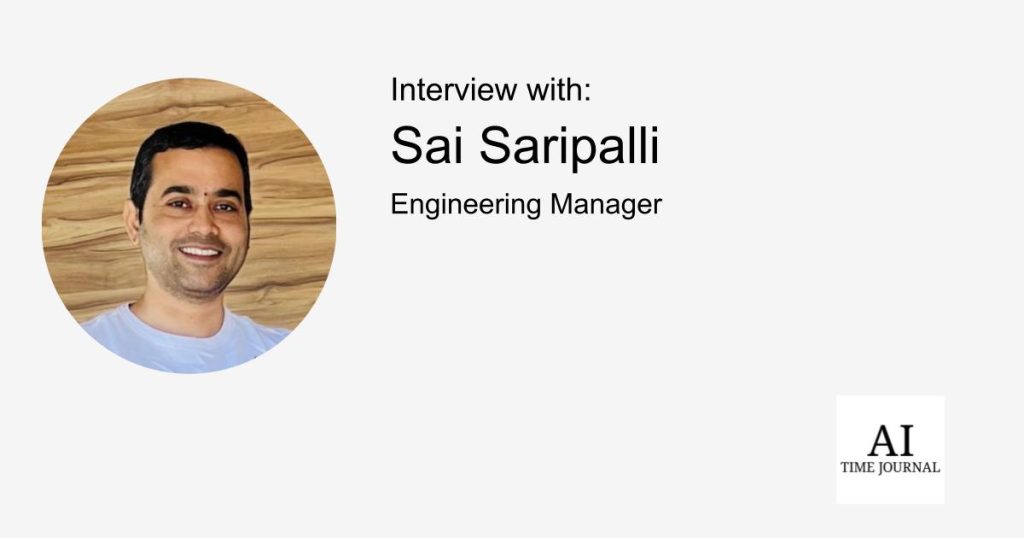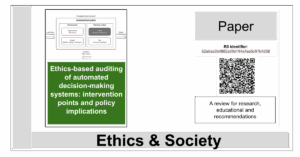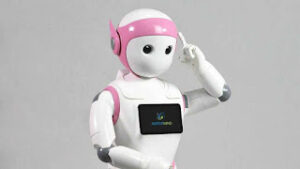
In this interview, we speak with Sai Saripalli, Engineering Manager at Autodesk and former technical leader, about the evolving demands of building scalable AI/ML systems in dynamic environments like e-commerce. Sai shares practical insights on embedding user feedback into engineering workflows, leveraging automation beyond efficiency, and what it truly takes to build resilient, high-impact teams. From API-first design to the cultural shifts that automation requires, this interview offers a grounded look at how engineering excellence aligns with business and user outcomes.
Explore more interviews here: Brij Kishore Pandey, Principal Software Engineer — AI’s Role in Software Development, Handling Petabyte-Scale Data, & AI Integration Ethics
When it comes to integrating AI/ML into scalable cloud solutions, what are the non-negotiables in your engineering playbook?
Data Architecture as a Foundation: The most critical, non-negotiable aspect is establishing robust data pipelines from day one. This foundational step, as we’ve experienced at Nike, is the bedrock of building conversational AI. It ensures clean, real-time data flows between consumer searches, product catalogs, and user interactions, instilling a sense of security and confidence in the process. Without this foundation, even the best ML models fail in production.
API-First Design for AI Services: Every AI component must be designed as a service with well-defined APIs. This approach enabled our team to iterate on the natural language understanding components independently while maintaining system stability. It’s essential for scaling teams and maintaining service reliability.
Observability and Model Performance Monitoring: Traditional Application Monitoring Isn’t Enough for AI Systems. You need dedicated instrumentation for model drift, prediction accuracy, and business impact metrics. We implemented real-time analytics that tracked not only system performance but also the effectiveness of our AI in solving user problems.
Fail-Safe Mechanisms AI systems must gracefully degrade: When our conversational AI couldn’t understand intent, it needed intelligent fallback paths rather than generic error messages. This approach, which we’ve found to be crucial at Nike, maintains user experience while the system learns, providing reassurance about the system’s resilience.
Security and Privacy by Design: With AI processing user conversations and product searches, data governance becomes paramount. Encryption, access controls, and audit trails aren’t afterthoughts; they’re architectural requirements. The key insight from leading these implementations is that AI/ML systems require different engineering disciplines than traditional applications. However, the fundamentals of scalable architecture, such as distributed computing, fault tolerance, and load balancing, still apply.
As someone passionate about customer-centric design, how do you ensure that technical teams stay connected with real user needs and behaviors?
At a company where I worked, we built feedback loops directly into our conversational AI. Every chat interaction became a data point about user intent and satisfaction. But beyond metrics, I established regular sessions where engineers could observe actual user conversations. This approach, which we’ve found to be invaluable, not only provides data but also connects engineers to the end-users, fostering a sense of empathy and understanding.
Cross-Functional Embedded Partnerships: I don’t believe in throwing requirements over the wall. My team’s work is embedded with UX researchers, product managers, and customer support. When we were building the smart chat, engineers sat in on user research sessions and support ticket reviews. This isn’t just about understanding requirements, it’s about engineers developing empathy for the problems they’re solving.
Data-Driven User Journey Mapping: We instrument everything, focusing on user journey metrics, not just system performance. How long does it take users to find what they need? Where do they drop off? What questions does our AI fail to answer? These become engineering priorities, not just product backlogs.
Prototype and Test Rapidly: I encourage my teams to build quick prototypes they can test with internal users first. At my current company, when working on e-commerce platform features, we often demo early concepts to product and sales teams who talk to customers daily. Their feedback catches user experience issues before they reach production.
Customer Success as Engineering Success: The most important cultural shift is making customer impact a core part of how we measure engineering success. Yes, we track uptime and performance, but we also track user engagement, task completion rates, and customer satisfaction scores. When engineers see their code directly improving someone’s day, it transforms their approach to problems.
In your experience, how has automation reshaped engineering workflows and decision-making processes, particularly in fast-paced e-commerce environments?
From Reactive to Predictive Operations: In e-commerce, you can’t afford downtime during peak traffic. At Nike, automation transformed us from firefighting to prevention. We automated deployment pipelines, but more importantly, we built automated monitoring that could predict traffic spikes and scale resources before users experienced slowdowns. The conversational AI system had automated fallback triggers; if response times degraded, it would automatically route complex queries to human agents.
Data-Driven Decision-Making at Scale: Automated Analytics and Reporting Are Transformative. Our teams obtain immediate insights into user actions, conversion pathways, and AI effectiveness without relying on manual data analysis. This transitions decision-making from intuition to evidence-based conclusions. When we receive automated notifications regarding conversation drop-off rates, we can quickly investigate the issue and implement solutions.
Quality Gates That Work: Automation enabled us to implement rigorous quality controls without slowing development. Automated testing, security scans, and performance benchmarks run on every commit. For AI systems, we automated model validation against historical user data, catching regressions before they impact customers.
Cultural Shift Toward Higher-Value Work: The most significant change is what engineers spend time on. Instead of manual deployments and reactive troubleshooting, my teams focus on architecture, optimization, and solving complex user problems. Automation handles the routine; humans handle the creative and strategic work.
The key insight: automation isn’t just about efficiency, it’s about enabling better engineering judgment through faster feedback and more reliable systems.
You’ve led diverse teams in high-impact roles. What qualities do you seek when building engineering teams that are both innovative and resilient?
Problem-Solving Curiosity: Over Pure Technical Skills. When building the conversational AI team at Nike, I prioritized engineers who asked “why” and “what if” questions. Technical skills can be taught, but curiosity about user problems and system behavior is more challenging to develop. I look for people who dig into root causes, whether it’s understanding why users abandon chat sessions or why specific API responses are slow.
Collaborative Intelligence: Innovation happens at the intersection of perspectives. I seek engineers who can clearly explain complex technical concepts to product managers and genuinely listen to insights from UX researchers and customer support teams. At my current company, some of our best e-commerce platform innovations originated from engineers who could synthesize feedback from sales teams, operations, and end-users.
Resilience Through Growth Mindset: E-commerce systems fail at the worst possible times, during peak traffic or product launches. I look for people who treat failures as learning opportunities rather than blaming events. The engineers who thrive are those who can debug a production issue at 2 AM and then lead a thoughtful post-mortem focused on prevention, not finger-pointing.
Technical Craftsmanship with Business Context: Great engineers understand that their code serves users and business goals. I want people who obsess over both code quality and user experience metrics. They write maintainable, scalable code because they know someone else, including their future selves, will need to extend it.
Ownership and Initiative: The most valuable team members don’t wait for perfect requirements. They proactively identify problems, propose solutions, and take ownership of outcomes. When our AI systems needed better intent recognition, the strongest engineers didn’t just implement what was asked; they researched alternatives, prototyped solutions, and made informed recommendations.
Communication as a Core Skill: Technical leadership requires translating complexity into clarity. I prioritize engineers who can document their decisions, mentor others, and communicate status effectively. In fast-moving environments, the ability to share knowledge and context becomes as important as writing good code. The strongest teams combine these qualities to create psychological safety, where people can take calculated risks, learn from mistakes, and push each other toward better solutions.


